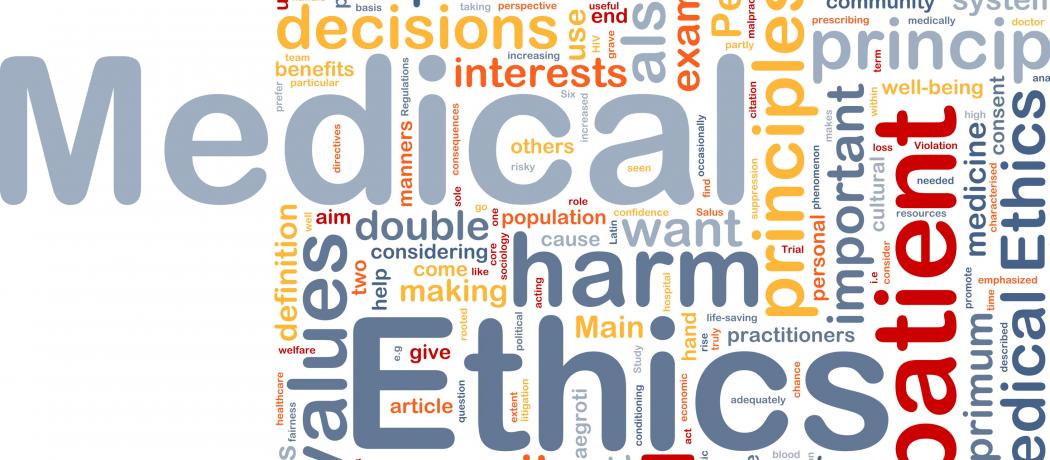When British and American forces entered the German concentration camp Bergen-Belsen in April 1945, Dr Jack McCreary was a 35-year-old wing commander in the Canadian Air Force. He was assigned to the Supreme Headquarters Allied Expeditionary Forces (SHAEF) as a member of the first group of Allied forces to enter the camp. Years later (between 1959 and 1972) Dr McCreary was dean of the UBC Medical School. For several years I worked under his direction in the development of interprofessional education in the health sciences. I saw him almost daily and traveled with him often. When I asked him about his experiences in Belsen he fell silent, then told me that the horror of what he had seen was such that even after all these years he was unable to talk about it.
I was reminded of Dr McCreary’s reaction when I read “Ethical considerations in the use of Pernkopf’s Atlas of Anatomy: A surgical case study” in the September 2019 issue of Surgery. Dr William Seidelman, UBC graduate, professor emeritus, University of Toronto Medical School, and one of my former students is a coauthor of the article. Dr Seidelman became an expert, author, and contributor to presentations about the history of German physicians who committed unthinkable atrocities in the name of medical science, not only in the various death camps but throughout the German Third Reich.
Eduard Pernkopf (1888–1955) was an Austrian professor of anatomy and dean of the Vienna Medical School until 1945. He and his artist associates were ardent supporters of the German Nazi movement, and he was an officer of the feared Schutzstaffel (SS) organization. The Pernkopf Topographic Anatomy of Man produced by his team is still a highly regarded scientific and artistic accomplishment. Years after World War II, and following persistent enquiries from the University of Vienna, an investigation revealed a dark truth: the Vienna Anatomical Institute received 1377 bodies of executed political prisoners, gypsies, and LGBT men and women who were guillotined or shot at a rifle range. At least 47 illustrations in what is often referred to as Pernkopf’s Atlas were based on the dissected bodies of victims of terror. Following this revelation, some libraries restricted access to the book, and the original publisher ceased reprinting.
Dr Susan Mackinnon, a highly regarded nerve surgeon at Washington University, ignited an ethical and moral debate in the mid-80s when she used Pernkopf’s Atlas as a guide for a complex surgical procedure. When Dr Mackinnon became aware that the illustrations were based on dissected victims of Nazi terror in Vienna she posed some important questions about the appropriateness of the clinical or educational use of data or images of victims of atrocities.
Opponents asserted that use of the Atlas makes the user complicit in the crimes of the German Third Reich. Proponents maintained that the knowledge gained from the accurate and artistically superior anatomical atlas may save lives and it even honors the memory of the victims, making use of the Atlas ethically acceptable.
The article in Surgery considers Dr Mackinnon’s case to illustrate some of the ethical considerations relevant to the decision of whether to use the Atlas in clinical practice. Although there is no evidence that the bodies dissected by Pernkopf were Jewish victims, there are important implications for medical ethics drawn in the article from Jewish law, specifically because at the time Jews were at the centre of persecution and genocide.
Rabbi Joseph A. Polak and Dr Michael A. Grodin explain that all medical ethics in the Jewish tradition is subsumed under three principles: the sacredness of human life, the Divine ownership of the human body, and its sacredness, which may never be desecrated, even after death. However, an overriding principle of Jewish law is “Pikuach Nefesh” (the saving of a human life). A detailed explanation of these principles of Jewish ethics and law leads these experts to the opinion that “should the Atlas be used, it should indeed be used with respect and gratitude and with appropriate solemnity. . . . if a single life can be saved using this Atlas, then doing so would not only be permissible, but probably mandatory.”
The story of this Atlas and its use can serve as an ethical case study in medical education.
—George Szasz, CM, MD
Suggested reading
Baker K. BBC News. Eduard Pernkopf: The Nazi book of anatomy still used by surgeons. Accessed 6 February 2020. www.bbc.com/news/health-49294861.
Elie Wiesel Center for Jewish Studies. Recommendations for the discovery of Jewish remains project. Accessed 6 February 2020. www.bu.edu/jewishstudies/research/project-on-medicine-and-the-holocaust/....
Hildebrandt S. The anatomy of murder. Ethical transgressions and anatomical science during the Third Reich. New York: Berghahn Books, 2016.
Hill R. Jack McCreary: Paediatrician, pedagogue, pragmatist, prophet. Vancouver: Tantalus Research Limited, 2005. ISBN (13)978-0-919478-80-0.
Wikipedia: Eduard Pernkopf. Accessed 6 February 2020. https://en.wikipidia.org/wiki/Eduard.Pernkopf.
Yee A, Zubovic E, Yu J, et al. Ethical considerations in the use of Pernkopf’s Atlas of Anatomy: A surgical case study. Surgery 2019;165:860-867.
This post has not been peer reviewed by the BCMJ Editorial Board.

